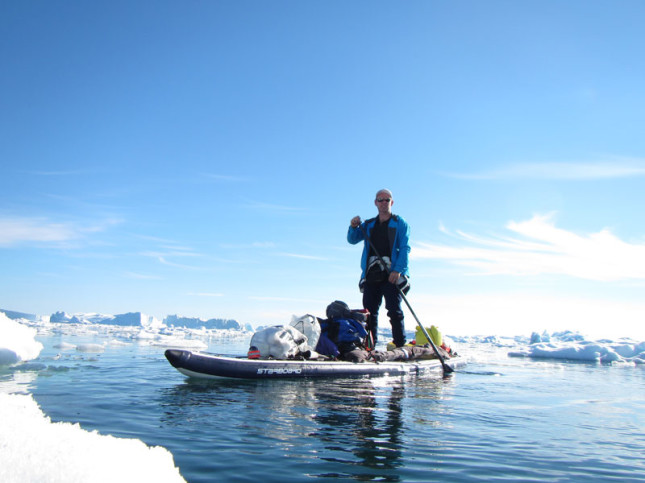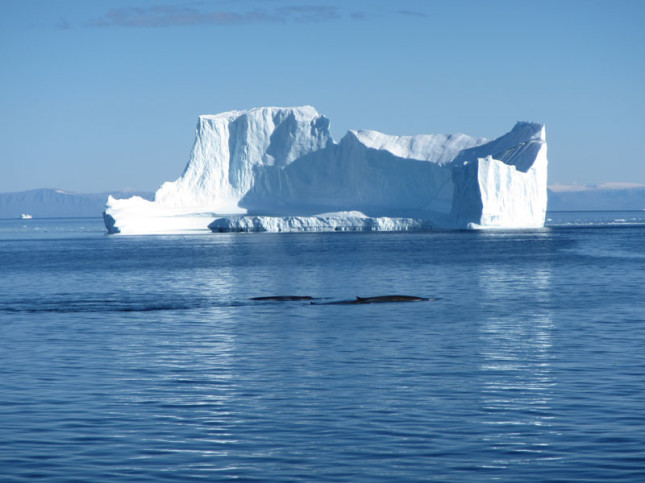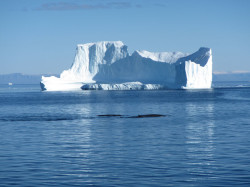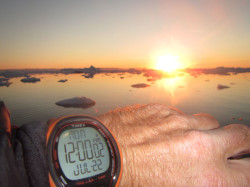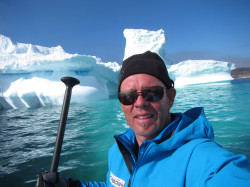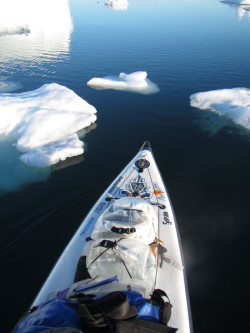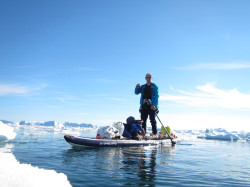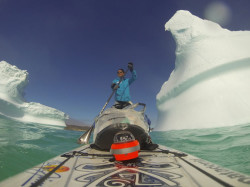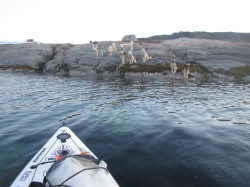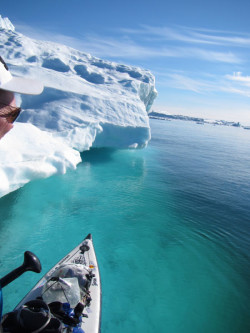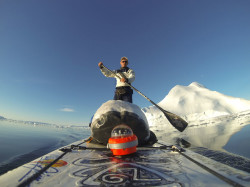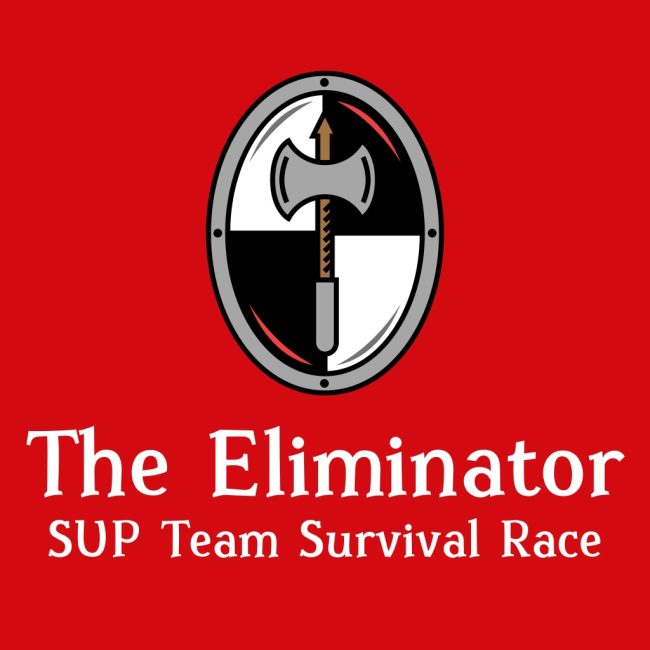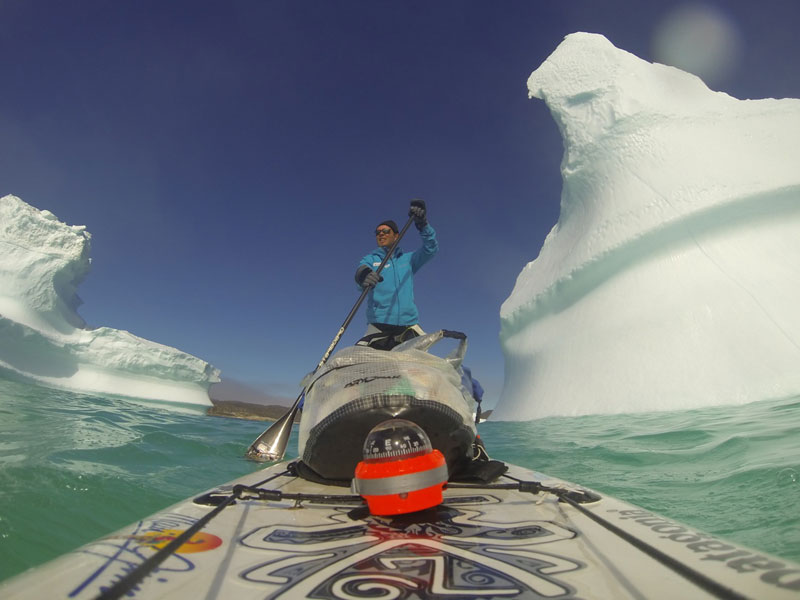
Icebergs, Whales And The Midnight Sun: Bart de Zwart’s Inspiring Adventure In Greenland
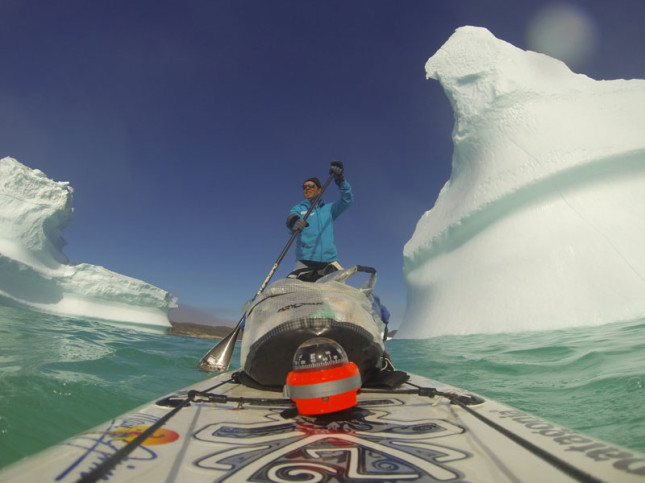
Boss Man’s note: Bart de Zwart is one of the most recognisable names in the sport of Stand Up Paddling. Not only as a racer (he’s won the SUP 11 City Tour three years running) but also as one of the most adventurous and inspiring paddlers on the planet. Bart has done many of the biggest and gnarliest SUP crossings ever, from paddling the length of the Hawaiian Islands unsupported to crossing the North Sea.
Bart’s latest adventure was something else though… originally planned as a 450km crossing from Canada to Greenland, weather forced a change of plans but also gave Bart the opportunity to explore some incredible scenery, so check out his inspiring story and photos below. Anyone else feeling adventurous all of a sudden?
And welcome Bart as our newest guest columnist. Mr. Endurance will be sending us race updates and stories about his amazing adventures here on SUPracer.com in the coming weeks.
The Arctic Expedition
by Bart de Zwart
Most fishermen, who had never seen a Stand up paddleboard before, were watching when I made my first paddles strokes out of the Ilulissat’s little fishing harbor. They had been very shy and didn’t ask many questions, looked at me and smiled when I was still preparing to leave.
I was packed with food and water for 8 days, safety gear, navigation equipment, my ‘SUP bed’ and plenty of warm clothes. I was using a 16′ Starboard inflatable, which had been easy to get on the plane with me all the way from Maui and can change the way we can explore: Now almost any destination you can go and use a SUP.
Today was a perfect Arctic day with blue skies and fresh but decent temperatures. In front of me was a 15-mile field of ice and icebergs. Ilulissat, which means Iceberg in Greenlandic is situated next to the most productive glacier in the Northern hemisphere. 50 meters a day and 20 billion tons a year worth of ice calve off the glacier and I was paddling right between those icebergs. Ice was everywhere. I had to work hard to find a way through it. On windy days this would be a very dangerous task, and a big risk of being crushed by the ever-moving ice.
Paddling between the icy giants was very fascinating and in the beginning almost frightening at the same time. Every minute you would hear a loud, sometimes thunder like, sound of an iceberg breaking off which sometimes set a whole set of movements in motion. I saw a small piece break off after which the whole 100 ft tall iceberg turned upside down in a slow motion. Or an even taller iceberg totally collapsed and created waves that could easily throw you over.
I paddled and took photos until well after midnight. The last few hours was an endless sunset and then just when you think it will set, the sun starts to rise again.
At 2am I was just outside the ice field. From now on only the big icebergs remained which were spread apart in front of me. It was another 50 miles to Aasiaat , the next small town. But I was tired of all the paddling and excitement and it was time to go to sleep.
Soon after I tried to sleep, I realized the bottom of my bed had a leak. Without any insulation between the wet board and me, it was cold. Too cold I soon realized. On top of that the wind picked up even more and because of all the icebergs the sea state was very unorganized, rocking me in every direction.
Soon I was seasick and cold.
There was nothing better to do than pack my bed together and start paddling again to get warm. This time with gloves and a hoody over my head. I was soon warm again, but I still felt miserably seasick and even had to throw up. After sailing for many years I can handle seasickness more than most people. Basically: You feel sick, throw up, wait 5 min, eat and drink to refuel what is lost and keep doing this until you start to feel better. On a ship this might take a few days but on a board I am mostly feeling OK after half a day.
On this trip my friend Tom Hammerton was supplying me with a daily weather forecast, which I could check on my satellite tracker, that received messages as well. After studying the weather in this region for the last couple of months, I noticed how fast things change and that you couldn’t rely on a forecast longer than 2 days ahead.
This trip should have been a crossing between Canada and Greenland. But in Canada, where I was supposed to leave from, there was still a 15-mile layer of ice and with 4 low-pressure systems in the area, the weather looked very risky. On top of that, after testing my board the last weeks, my speed on the inflatable board with 120 lbs (55 kgs) of water, food and gear wasn’t what I’d hoped for.
Suddenly this could have been a 10-day adventure instead of a 5 day crossing, with water temperatures close to freezing. I decided that it was not worth risking my life. Life is too beautiful.
Every now and then I would see some whales close by, but they would always stay at a distance. It was mostly Atlantic Humpback whales, obviously not bothered by the cold water. I was loving my new drysuit from SUPSKIN, which had been so much more comfortable than the wetsuit I had been paddling in on previous trips. It is made of a breathable material and is very light and most important of all I could wear anything I would like underneath.
I tried to eat some food every hour and little by little the seasickness was going away. Every mile or so, I would pass by a giant iceberg, tall as a building and in a different shape every time.
After almost 24 hours of paddling I could see my destination and I was getting closer to the island in front of Aasiaat. The wind died completely which made it a lot easier to spot the many whales and seals. The seals would curiously pop up their head high out of the water and look around to see who was coming their way, though quickly disappearing when they saw me.
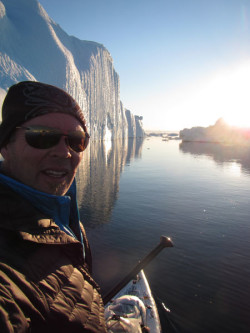 Finally at 9pm, after 28 hours, I arrived in Aasiaat, a small town with a harbor and one of the few airports in this area. I called my wife on the satellite phone and told her that I was tired, but felt good and would continue along the coast, depending on the weather.
Finally at 9pm, after 28 hours, I arrived in Aasiaat, a small town with a harbor and one of the few airports in this area. I called my wife on the satellite phone and told her that I was tired, but felt good and would continue along the coast, depending on the weather.
The following day it was sunny, but also windy from the South, the direction I was going. I started paddling and almost gave up right away. I was doing about 1.5 knots. At this rate I would never get to Sisimiut, which was still 120 miles away.
In the next days I paddled little by little South, moving from one small camping spot to the next. Sometimes I slept in forgotten villages of 3 houses, where the owners left a long time ago to move to the ‘bigger’ towns with more facilities. With a population of only 57,000, Greenland is struggling to make any infrastructure beyond the bigger towns.
Other nights I would find a small quiet bay with a view over the ocean and the endless stream of ice bergs floating by. The icebergs kept amazing me with their many shades of white and blue.
After a week on the board paddling between Ilulissat and Attu, I got to Kangaatsiaq, a town with 460 inhabitants, big enough for a supermarket with incredible Danish pastry and a little harbor where I found a fisherman that gave me a ride to Aasiaat, where I checked into ‘The Seaman Hostel’.
The last days the weather had been a little overcast with a few showers, but now it was pouring and the temperatures dropped even more. Inside my little room it felt ridiculously warm, but maybe it was me, maybe I started to get used to this harsh weather here…
Over the next 2 days, during my 7 flights to get back home to Maui, I had plenty of time to reflect on the past 2 weeks.
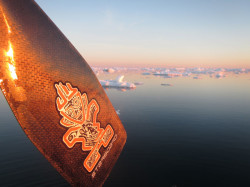 This was an amazing adventure. The Arctic is an incredible place to be, a place still very unspoiled, raw and remote, but also with a harsh and difficult climate to live in.
This was an amazing adventure. The Arctic is an incredible place to be, a place still very unspoiled, raw and remote, but also with a harsh and difficult climate to live in.
In Greenland they are starting to feel the changes due to global warming. Every year the ice is withdrawing, the glaciers and the sea ice as well. In the last decades there has been a 3.6% decline of sea ice per decade. I went to Greenland inspired by the documentary ‘Chasing Ice‘, where James Balog shows, with 25 time lapse cameras, mountains of ice in motion as they disappear at a breathtaking rate.
I am glad I had the opportunity to experience this incredible place and realize there is so much more to explore…
This Arctic Expedition was only possible with the help of my main sponsor STARBOARD, who have supported me over the years in many ways.
Sponsors: SUPSKIN dry suits, PATAGONIA, MAUI JIM, POCKETFUEL NATURALS, BLACK PROJECT FINS.
You can check out more of Bart’s adventures on his SUP Crossing blog.
(all photos © Bart de Zwart)
- Bart de Zwart



